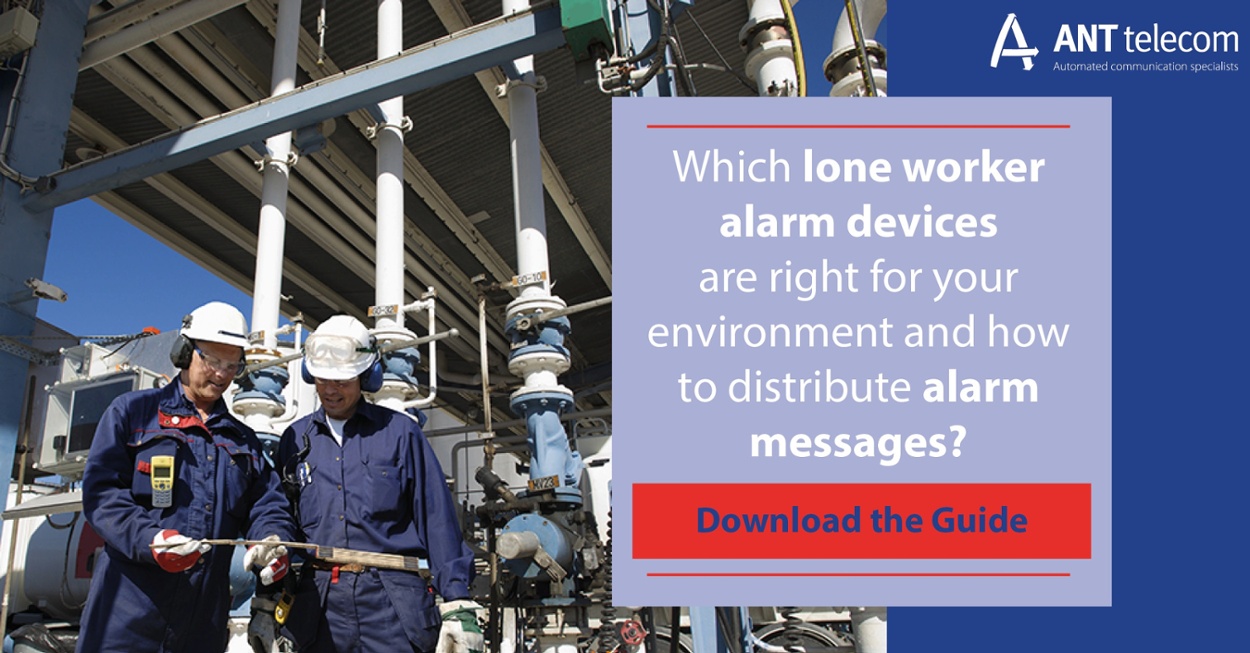
Communication is a key part to the successful operation of medical establishments. With many hospitals occupying vast areas of ground, and staff often working in separate buildings or wards, access to communication devices is essential. Hospitals are common places to find lone workers, but the challenges that lone workers face in these types of environments are very different to most other workplaces. Hospital staff are not only responsible for their own health and wellbeing while at work, they are also responsible for their colleagues', visitors, and patients that are being treated on the site.
Examples of Lone Workers In A Medical Environment
Lone workers face hazards in a variety of industries, ensuring that these are addressed and prepared for effectively by health and safety managers, is an integral part of preventing accidents or injuries in the workplace. Although many members of hospital staff are in regular contact with the general public, most will find themselves working alone at some point, even if only for a short period of time. In addition to this, many members of staff will be required to see patients on a one-to-one basis, although they will often be in the same room as a patient, they will still be (in effect) working alone.
Here are several examples of areas where lone workers can be found:
- Reception - Staff are often required to man a reception area alone, although some receptions may employ several staff members to operate them, receptions for smaller wards are usually manned by one member of staff.
- Lab Workers - Some lab workers can find themselves working alone if required to work out-of-hours, often with hazardous chemicals.
- Security Staff - Security staff play a key role in ensuring all patients are safe on the hospital grounds. They are often required to patrol certain areas of the grounds alone. With many security staff members working alone at night, communication is an important part of the role.
- Paramedics Or Patient Transportation Staff - Although efforts are made to ensure that paramedics or transportation staff are working alongside others, there are often times where staff can be left alone with a patient, even if only for a short period of time.
- Porters - Hospital porters are required to transport supplies between wards, and can sometimes go long periods of time without coming into contact with other staff members, particularly if they are working at night.
- Maintenance Staff - With most hospitals operating on a 24-hour basis, maintenance to both the building and equipment is crucial. Maintenance staff may find themselves working in hazardous areas of the hospital alone, this can include in lift shafts, outside, or on the roof of the building.
- Nurses and doctors that treat patients in their homes can be at risk as they can spend long periods of time outside the hospital with little contact from their colleagues.
Lone Worker Hazards
The above examples are just a small selection of lone worker roles that can be found in a hospital environment. Staff that are working alone with patients can encounter additional hazards to those that are not required to engage with patients. Staff that have a patient in their care are responsible for both their own safety, and that of the patient. When working in such an environment, emergencies must be responded to quickly and effectively, as they can be a matter of life or death. Workers that provide one-to-one services to patients can also be exposed to attacks or verbal abuse from patients. This threat can increase for staff that work late at night, with patients that are under the influence of alcohol or other substances. It is essential that staff can quickly call for help if an incident arises, to prevent any injury to themselves, patients, or other members of staff.
Staff that do not engage with patients are also exposed to hazards, particularly those working alone on the maintenance of the building. Large hospitals are especially hazardous, with many having a number of lift systems spread throughout the building. Lift shafts are incredibly dangerous, if a staff member gets stuck inside a lift shaft, or obtains an injury while working on one, contacting other staff members for help is a matter of urgency.
Regardless of whether or not a hospital staff member's main role is to work with patients, there are still lone worker hazards that affect all roles. Any worker in a hospital can fall or injure themselves while at work. Most hospitals are filled with staircases. When staff under constant pressure to respond quickly to emergencies, trips and falls can easily happen.
Communication - A Solution for Lone Workers Exposed To Hazards
Although the hazards that each individual staff member faces can differ greatly, there is one thing they all have in common. Every staff member in a hospital (regardless of their role), can benefit from having the access to communication devices. Lone workers should always carry a lone worker communication device with them to call for help when needed. These devices allow the worker to easily trigger an alarm and alert others if they are in distress. The devices can vary and can range from integrated apps that can be accessed from a smartphone, to simple devices that trigger an alarm by pressing a single button. Tilt sensors are also very effective in an emergency environment, these devices work by automatically triggering an alarm if the device detects that the wearer is in a horizontal position or beyond a specific angle for a certain period of time. Digital radio or handsets that work over Wi-Fi can be used in environments where mobile reception isn’t dependable.
In addition to personal devices, hospitals can benefit from other security devices that are installed around the building. These can include panic buttons on walls, and other alarm systems, triggered by sensors. Ensuring that all staff have access to these security devices is extremely important in health and safety management planning. Furthermore, training is a fundamental consideration for those responsible in developing solid safety plans. All staff should be correctly trained in the operation of devices and alarm systems. Some devices are very simple to use and require no training, while others may be more complex.





